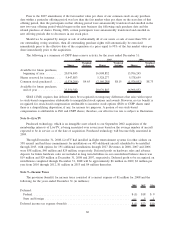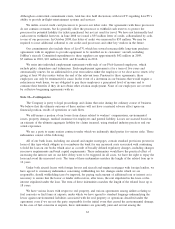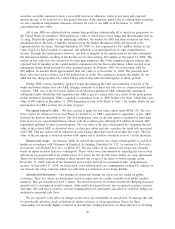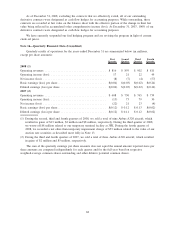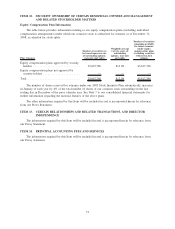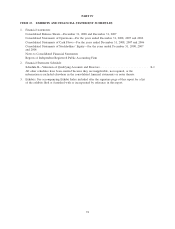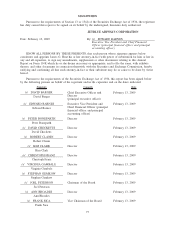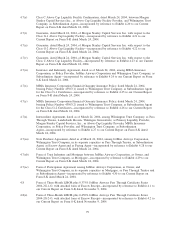JetBlue Airlines 2008 Annual Report Download - page 79
Download and view the complete annual report
Please find page 79 of the 2008 JetBlue Airlines annual report below. You can navigate through the pages in the report by either clicking on the pages listed below, or by using the keyword search tool below to find specific information within the annual report.Report of Independent Registered Public Accounting Firm
The Board of Directors and Stockholders of
JetBlue Airways Corporation
We have audited JetBlue Airways Corporation’s internal control over financial reporting as of
December 31, 2008, based on criteria established in Internal Control — Integrated Framework issued by the
Committee of Sponsoring Organizations of the Treadway Commission (the COSO criteria). JetBlue Airways
Corporation’s management is responsible for maintaining effective internal control over financial reporting,
and for its assessment of the effectiveness of internal control over financial reporting included in the
accompanying Management’s Report on Internal Control Over Financial Reporting. Our responsibility is to
express an opinion on the company’s internal control over financial reporting based on our audit.
We conducted our audit in accordance with the standards of the Public Company Accounting Oversight
Board (United States). Those standards require that we plan and perform the audit to obtain reasonable
assurance about whether effective internal control over financial reporting was maintained in all material
respects. Our audit included obtaining an understanding of internal control over financial reporting, assessing
the risk that a material weakness exists, testing and evaluation the design and operating effectiveness of
internal control based on the assessed risk, and performing such other procedures as we considered necessary
in the circumstances. We believe that our audit provides a reasonable basis for our opinion.
A company’s internal control over financial reporting is a process designed to provide reasonable
assurance regarding the reliability of financial reporting and the preparation of financial statements for external
purposes in accordance with generally accepted accounting principles. A company’s internal control over
financial reporting includes those policies and procedures that (1) pertain to the maintenance of records that,
in reasonable detail, accurately and fairly reflect the transactions and dispositions of the assets of the
company; (2) provide reasonable assurance that transactions are recorded as necessary to permit preparation of
financial statements in accordance with generally accepted accounting principles, and that receipts and
expenditures of the company are being made only in accordance with authorizations of management and
directors of the company; and (3) provide reasonable assurance regarding prevention or timely detection of
unauthorized acquisition, use, or disposition of the company’s assets that could have a material effect on the
financial statements.
Because of its inherent limitations, internal control over financial reporting may not prevent or detect
misstatements. Also, projections of any evaluation of effectiveness to future periods are subject to the risk that
controls may become inadequate because of changes in conditions, or that the degree of compliance with the
policies or procedures may deteriorate.
A material weakness is a deficiency, or combination of deficiencies, in internal control over financial
reporting, such that there is a reasonable possibility that a material misstatement of the company’s annual or
interim financial statements will not be prevented or detected on a timely basis. The following material
weakness has been identified and included in management’s assessment. The Company did not maintain
effective controls to timely monitor and review the performance of its physical inventory observations, cycle
counting procedures and related count adjustments in the inventory system, resulting in errors in the recorded
inventory balances. In addition, the Company’s new inventory system, which was implemented in the third
quarter of 2008, contained a programming error that caused certain inventory items to be undervalued.
Although these deficiencies did not result in a material misstatement as of December 31, 2008 or any prior
periods, they did result in accounting adjustments and a reasonable probability that a material misstatement of
inventory balances in the Company’s annual or interim financial statements would not have been prevented or
timely detected. This material weakness was considered in determining the nature, timing and extent of audit
tests applied in our audit of the 2008 financial statements and this report does not affect our report dated
February 13, 2009 on those financial statements.
In our opinion, because of the effect of the material weakness described above on the achievement of the
objectives of the control criteria, JetBlue Airways Corporation has not maintained effective internal control
over financial reporting as of December 31, 2008, based on the COSO criteria.
/s/ Ernst & Young LLP
New York, New York
February 13, 2009
70


